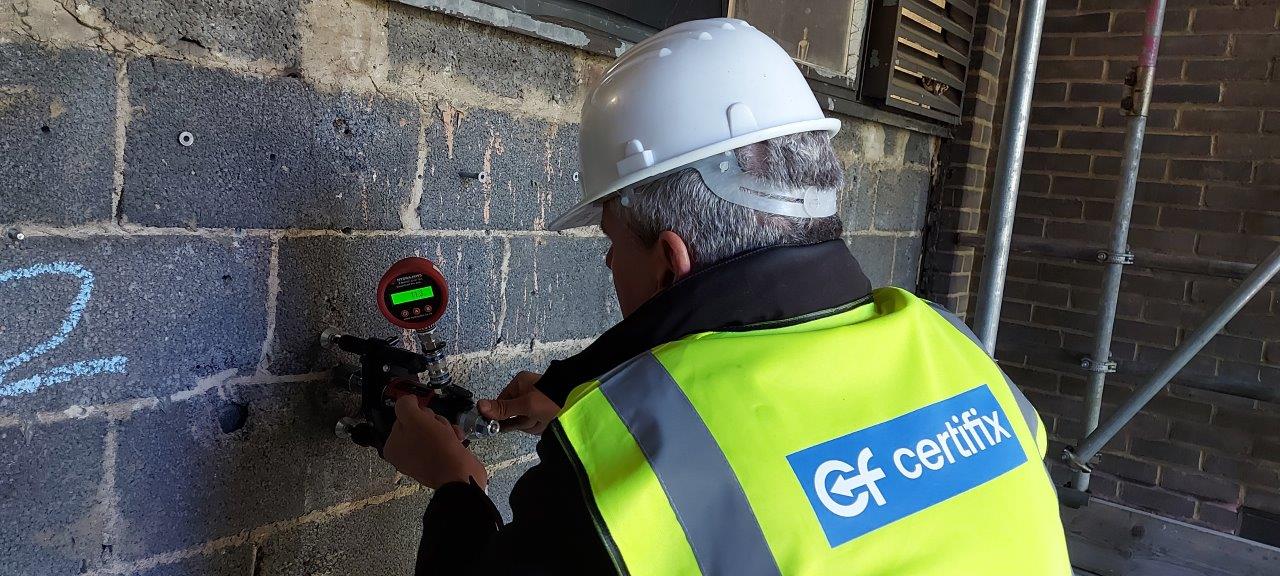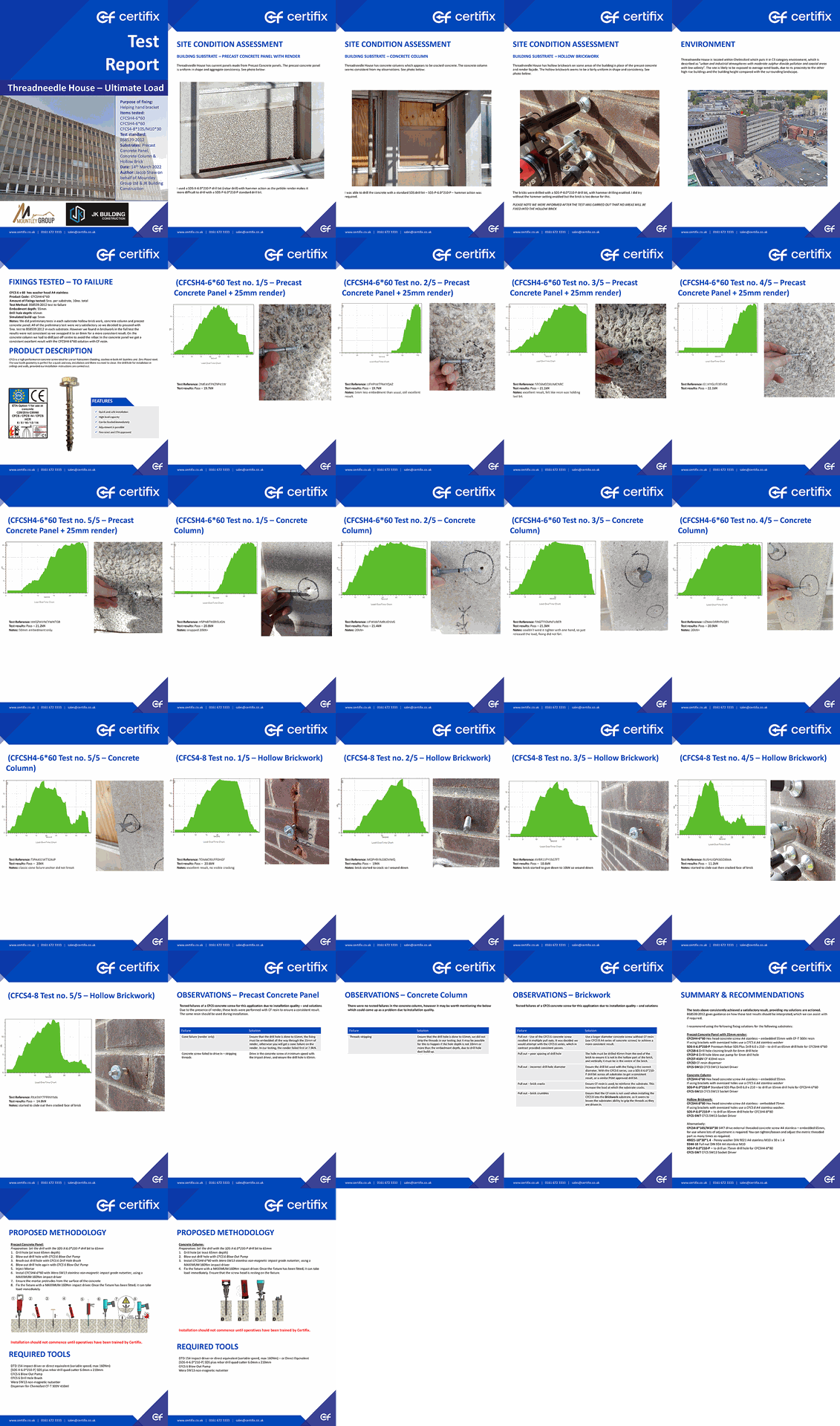Get an in depth Pull Test report for your site!
Download a Sample Report
See for yourself the detail we put into our Pull Test Reports!
Industry Leading Proof/Ultimate Load (Pull Test) Reports 
Our test reports are the most comprehensive pull tests available in the industry. They offer an in depth report on performance of each anchor type tested into each substrate we are asked to test on site. We don't just give you an auto generated PDF or a long list of "Tensile Loads kN" results. We start out reports with the following:
- Type of test
-
- Ultimate Load Test to BS8539:2012 - Where the tester takes the anchor to it's Failure Load in the substrate tested - used to determine an Allowable Load where the ETA approval does not have enough information in the substrate tested, or the client wants to test the fixing & substrate combination to it's limits. The Allowable Load cannot exceed the load allowed for in the ETA approval. The structural engineer can use this load to ensure the allowable load will exceed the Applied Load.
- Proof Load Test to BS8539:2012 - pre installed fixings on site are tested to an agreed Factored Load which is less than the Recommended Load.
- Purpose of Fixing (to substrate) - e.g:
-
- Helping hand bracket
- Fire barrier bracket
- Base plate
- Test Standard Used
- Substrates Tested
- Site Attendee / Author
We then give you an idea of the conditions on site - with the follwing:
- Site Condition Assessment - one for each substrate
- Site Environment
-
- Corrosivity
- Building height compared to surrounding area - potential for high wind loads?
We then move onto the actual tests. We start by giving an detailed overview of the fixings tested, then we give you an in depth report on each test, noting any anomalies encountered in each test area. We would usually note down the area for each test, the method varies by building.
- Fixing Tested
- Test Reports
-
- Graph showing the performance of the fixing when tensile load is applied during the test over time
- Image showing the area tested and the fixing in situ
- Traceable test reference
- Highest tensile load achieved during test
- Notes of any anomalies during the test, location tested, etcetera
- Observations
-
- One per substrate
- Notes of any failures we encountered
- Solutions for each failure type if possible
- Summary and Recommendations
-
- Gives a brief overview of the overall opinion of the tester who attended site
- Suggested anchor for each substrate - chosen on the basis of
-
- Performance during tests
- Suitability for environment
- Insurance requirements
- We also tell you the accessories required for each anchor type as well
- Installation Methodology
-
- Step by step instructions for each anchor type, this might differ per substrate
- Required tools for each anchor type (and substrate)
The below image gives you an idea of how extensive our reports were. This was a standard report, some are more simple if it's a smaller site, some larger sites can take multiple days to complete and the reports can be 100s of pages.

We'd appreciate the chance to have a chat about your project. We will definitely need to find out more about the substrates and any potential challenges before we attend site. Please ring us on 0161 672 3333 or email us on info@certifix.co.uk to get your pull test in the diary (alternatively, book it through our portal at the bottom of the page.